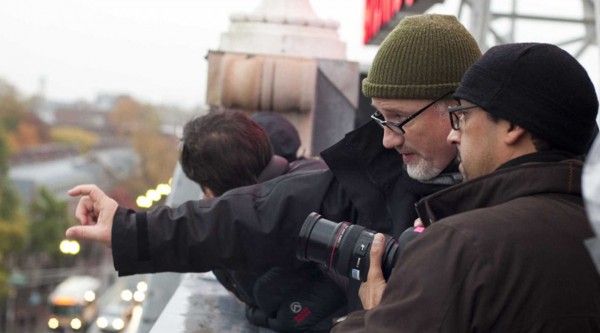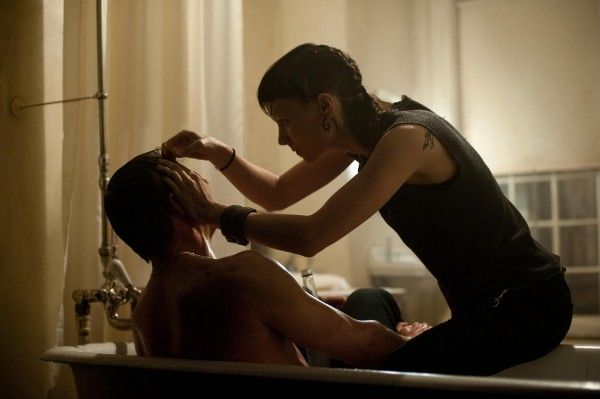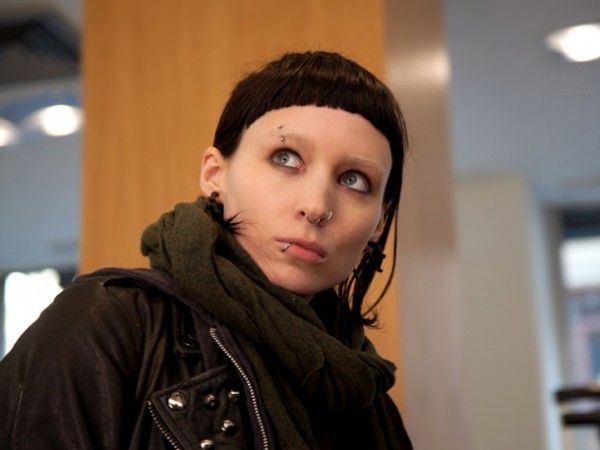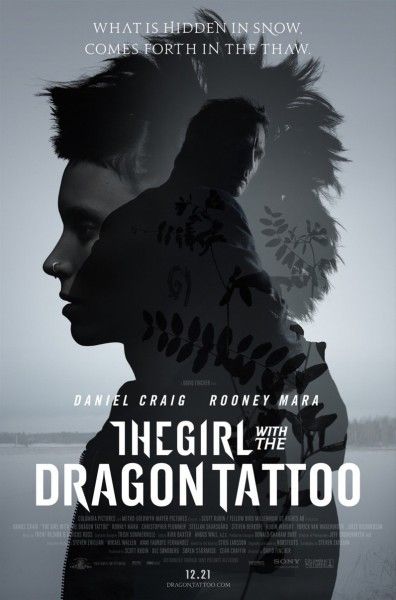When David Fincher was fielding accolades for his 2010 masterpiece The Social Network, he was already in the midst of filming his follow-up project. On the surface, The Girl with the Dragon Tattoo wasn’t a significant departure for Fincher. At the time, he was already well-versed in the arena of making dark dramas with an edge, be it The Game or Zodiac, and he clearly had plenty of experience telling stories about serial killers. The source material of Dragon Tattoo was massively popular, sure, but with that popularity came the opportunity to take hold of an even bigger budget, telling this dark tale about a pair of outsiders investigating a killer of woman against an epic canvas. What Fincher (and the rest of us) couldn’t have known at the time, however, was that The Girl with the Dragon Tattoo would be one of the last of its kind, the dying breath of the big budget studio adult drama, as Hollywood would pivot to bigger, flashier, and more superhero-er films in the ensuing years. In hindsight, The Girl with the Dragon Tattoo is a fossil from a bygone era.
The “American” adaptation of Stieg Larsson’s bestselling novel The Girl with the Dragon Tattoo was born in 2009, when producer Scott Rudin secured the rights to the book for Sony Pictures and fellow producers Michael Lynton and Amy Pascal. They set Oscar-winning Schindler’s List screenwriter Steven Zaillian to work on the adaptation, and in March 2010—just as Fincher had completed principal photography on Sony’s The Social Network—the studio began courting the Se7en filmmaker to take the helm.
Fincher had actually been approached about Dragon Tattoo years earlier by Kathleen Kennedy, with whom he’d worked on The Curious Case of Benjamin Button. But he rejected the proposition without reading the book, assuming a movie about a bisexual hacker in Stockholm who helps a disgraced journalist uncover a dark secret would never get made. The Swedish film adaptation proved he was wrong, and when Pascal came calling a couple years later, she had an exciting proposition:
“As I finished Social Network, [Sony studio boss] Amy Pascal told me they’d just bought the rights to Dragon Tattoo,” says Fincher. “She said, 'We believe that a movie franchise doesn’t necessarily have to be for 11-year-olds, that this material is most certainly not for 11-year-olds and that is why we are bringing it to you’.”
And so the idea of creating a $100 million franchise film made solely for adults was appealing, especially in 2010, when that kind of movie was being made less and less. Films like Munich ($70 million budget), Gangs of New York ($100 million budget), and Jerry Maguire ($50 million budget) were becoming a rarity, at least at those price points. The mid-to-high-budget drama was disappearing as studios pivoted to high-concept genre fare, and indeed 2010—when The Girl with the Dragon Tattoo was greenlit and began production—marked a turning point.
Topping the box office in 2010 were films that would prove to be harbingers of what was to come: Disney/Pixar’s Toy Story 3, Disney’s Alice in Wonderland, and Marvel Studios’ Iron Man 2. The Toy Story sequel proved that Disney could mine nostalgia to great success, as moviegoers who were children when the first Toy Story came out were now old enough to buy their own tickets, and more than willing to dig back into their childhoods with a teary-eyed sequel about growing up. And now 2019 alone will bring us live-action adaptations of 90s favorites Aladdin and The Lion King. Alice in Wonderland—which grossed over $1 billion worldwide—solidified 3D as a new way for studios to squeeze even more money out of ticketbuyers, setting off a rush of 3D conversions for a strategy that would prove to be widespread, yet short-lived. And Iron Man 2, of course, was a mere stepping stone on the path towards marketplace domination for Marvel Studios.
And then here comes The Girl with the Dragon Tattoo in December 2011, a nearly three-hour drama set in Sweden that kind of follows the mystery of a serial killer but is really a film about misogyny in its many forms. The cause of the film’s somewhat lackluster performance at the box office (it made $232.6 million worldwide) can be debated, from Dragon Tattoo fatigue to poor timing (and Fincher reportedly butted heads with the studio over the film's marketing), but at the end of the day David Fincher made a David Fincher film through and through. The drama’s themes remain resonant all the years later, the immaculate craftsmanship is a feast for the senses, and Rooney Mara Oscar-nominated performance is still, well, great. And it was all painted on an epic canvas that traversed ambitious narrative territory throughout its unique five-act structure.
But while fans were clamoring to see the sequels that never materialized, we didn’t realize films like Dragon Tattoo were about to go extinct. Subsequent years saw some big-budget adult hits here and there like The Wolf of Wall Street and Django Unchained, but the box office charts started to become overcrowded with superheroes, Disney animated films, and franchises like Fast & Furious or The Hunger Games—and that’s before Star Wars comes into the picture in 2015. Meanwhile, dramas like American Hustle (made for $40 million) are starting to get made for far less than Hollywood used to invest in dramas made specifically for adults.
It’s no coincidence that Fincher’s next project after Dragon Tattoo was executive producing and directing the first two episodes of House of Cards, the original series that launched Netflix as a destination for prestige original content. In 2018, filmmakers like Cary Joji Fukunaga, Steven Soderbergh, and even Martin Scorsese are flocking to television to dabble in the kind of adult storytelling on a large canvas that has largely disappeared from cinemas, and Fincher was at the forefront all those years ago with House of Cards. It’s also no coincidence that after Fincher wraps up the second season of his second Netflix series Mindhunter, his next feature film project is expected to be World War Z 2.
Now, no one expects Fincher to phone in a zombie apocalypse movie with the World War Z sequel, but his involvement is indicative of what it takes to get more complicate ideas on movie screens nowadays. In the vein of how the horror genre has been a vehicle for challenging thematic subject matter for decades, filmmakers are now using big budget genre movies to explore engaging thematic ideas. Movies like Mad Max: Fury Road, Black Panther, or even Star Wars: The Last Jedi have fare more on their mind than explosions or lightsaber fights, but filmmakers like Ryan Coogler or Rian Johnson can’t really explore those ideas on a large canvas without the packaging of a Marvel movie or a Star Wars movie. Studios simply aren’t willing to pony up $80 million for an adult drama anymore.
Even in the case of the Dragon Tattoo franchise, Sony Pictures is releasing a reset of sorts, The Girl in the Spider’s Web, but it’s a very different take. For one, it’s adapted from one of the books not written by Larsson, but it also carries a reported budget of just $43 million. It’s not even being marketed as a major tentpole the way Fincher’s film was. This one is dropping in early November, as a smaller-scale genre movie of sorts.
With The Girl with the Dragon Tattoo, David Fincher adapted a bestselling pageturner into a lengthy, compelling, and challenging film about misogyny and the relationships between men and women. It used to be that was enough, but even then Fincher seemed aware that he was getting away with something. He knew the idea of Sony greenlighting a near-$100 million drama was a rare opportunity, and he took it and ran with it. What he maybe didn’t know, and what we certainly didn’t know, was how quickly the Hollywood landscape would shift. The times they aren’t a’changin’—they’ve changed. And whether a film like The Girl with the Dragon Tattoo ever gets made again is anyone’s guess.






